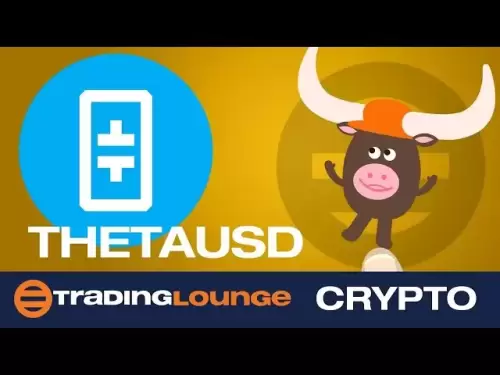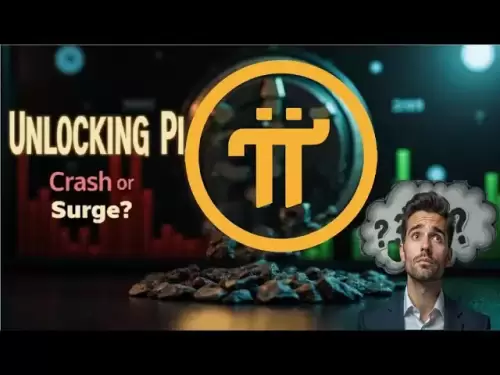-
 Bitcoin
Bitcoin $105,734.0170
-1.51% -
 Ethereum
Ethereum $2,414.7328
-3.26% -
 Tether USDt
Tether USDt $1.0002
0.00% -
 XRP
XRP $2.1748
-2.62% -
 BNB
BNB $647.5663
-1.72% -
 Solana
Solana $148.1710
-3.81% -
 USDC
USDC $0.9999
-0.01% -
 TRON
TRON $0.2799
-0.02% -
 Dogecoin
Dogecoin $0.1586
-4.17% -
 Cardano
Cardano $0.5440
-5.03% -
 Hyperliquid
Hyperliquid $37.0680
-6.59% -
 Bitcoin Cash
Bitcoin Cash $501.2052
-4.01% -
 Sui
Sui $2.6846
-3.47% -
 Chainlink
Chainlink $12.8488
-3.38% -
 UNUS SED LEO
UNUS SED LEO $8.9480
-1.51% -
 Avalanche
Avalanche $17.2059
-3.87% -
 Stellar
Stellar $0.2270
-4.75% -
 Toncoin
Toncoin $2.7889
-3.93% -
 Shiba Inu
Shiba Inu $0.0...01126
-1.76% -
 Litecoin
Litecoin $83.6893
-3.36% -
 Hedera
Hedera $0.1445
-4.49% -
 Monero
Monero $312.4014
-2.58% -
 Dai
Dai $1.0000
0.00% -
 Ethena USDe
Ethena USDe $1.0001
-0.01% -
 Polkadot
Polkadot $3.2920
-3.32% -
 Bitget Token
Bitget Token $4.4629
-1.81% -
 Uniswap
Uniswap $6.5386
-8.42% -
 Aave
Aave $260.3780
-6.01% -
 Pepe
Pepe $0.0...09308
-4.54% -
 Pi
Pi $0.4864
-3.04%
How to stake tokens in Exodus wallet?
Staking in Exodus is easy: update your wallet, hold supported tokens like XTZ, ATOM, or ALGO, and earn rewards automatically or by delegating to bakers/validators.
Apr 07, 2025 at 10:21 am
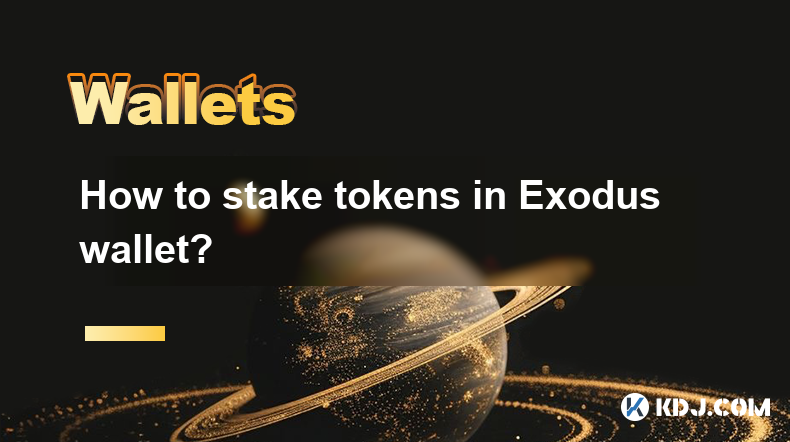
Staking tokens in the Exodus wallet is a straightforward process that allows you to earn rewards on your cryptocurrency holdings. Exodus supports staking for several popular cryptocurrencies, including Tezos (XTZ), Cosmos (ATOM), and Algorand (ALGO). To begin staking, you first need to ensure that your wallet is updated to the latest version and that you have the supported tokens in your wallet. Once you've confirmed these prerequisites, you can proceed with the staking process. This article will guide you through the steps to stake your tokens in Exodus, ensuring you can maximize your earnings with ease.
Preparing Your Exodus Wallet for Staking
Before you can start staking, it's crucial to prepare your Exodus wallet properly. First, ensure that your wallet is running the latest version. You can check for updates by clicking on the settings icon in the top right corner of the wallet and selecting "Check for Updates." If an update is available, follow the prompts to install it. Next, make sure you have the tokens you wish to stake in your wallet. You can add tokens by clicking on the "+" icon, selecting the cryptocurrency, and following the instructions to receive the tokens into your wallet. Finally, ensure that your wallet is fully synced with the blockchain to avoid any issues during the staking process.
Staking Tezos (XTZ) in Exodus
To stake Tezos (XTZ) in Exodus, follow these steps:
- Open your Exodus wallet and navigate to the Tezos (XTZ) section.
- Click on the "Stake" button next to your Tezos balance.
- You will be prompted to choose a baker. Exodus provides a list of recommended bakers, but you can also enter the address of a baker of your choice.
- After selecting a baker, click "Delegate" to start the staking process. Your Tezos will be delegated to the chosen baker, and you will start earning rewards based on their performance.
Remember that the delegation process may take a few days to complete, and you will start earning rewards once it is finalized.
Staking Cosmos (ATOM) in Exodus
Staking Cosmos (ATOM) in Exodus is similar to staking Tezos. Here are the steps:
- Open your Exodus wallet and go to the Cosmos (ATOM) section.
- Click on the "Stake" button next to your Cosmos balance.
- You will be prompted to choose a validator. Exodus provides a list of recommended validators, but you can also enter the address of a validator of your choice.
- After selecting a validator, click "Delegate" to start the staking process. Your Cosmos will be delegated to the chosen validator, and you will start earning rewards based on their performance.
The delegation process for Cosmos may also take a few days to complete, and you will start earning rewards once it is finalized.
Staking Algorand (ALGO) in Exodus
Staking Algorand (ALGO) in Exodus is a bit different from Tezos and Cosmos because Algorand uses a pure proof-of-stake (PPoS) consensus mechanism. Here's how to stake Algorand:
- Open your Exodus wallet and navigate to the Algorand (ALGO) section.
- Simply holding Algorand in your Exodus wallet automatically qualifies you for staking rewards. There is no need to delegate or choose a validator.
- Your rewards will be automatically added to your Algorand balance over time.
This automatic staking feature makes Algorand one of the easiest cryptocurrencies to stake in Exodus.
Managing and Withdrawing Staked Tokens
Once you have staked your tokens, you may want to manage or withdraw them at some point. Here's how to do it:
- To manage your staked Tezos or Cosmos, go to the respective section in your Exodus wallet and click on the "Manage" button next to your staked balance. You can then choose to change your baker or validator if you wish.
- To withdraw your staked tokens, click on the "Undelegate" button. Note that the unstaking process may take a few days to complete, and you will not earn rewards during this period.
- For Algorand, since staking is automatic, you can simply transfer your Algorand out of your Exodus wallet at any time, and you will stop earning rewards.
Maximizing Your Staking Rewards
To maximize your staking rewards in Exodus, consider the following tips:
- Choose reliable bakers or validators for Tezos and Cosmos. Look for those with a good track record of uptime and performance.
- Keep your tokens staked for longer periods to benefit from compound interest. Reinvesting your rewards can significantly increase your earnings over time.
- Stay informed about the staking requirements and rewards for each cryptocurrency. Some may offer higher rewards but require longer lock-up periods.
- Regularly check your wallet for any updates or changes to the staking process to ensure you are always earning the maximum possible rewards.
Understanding the Risks of Staking
While staking can be a lucrative way to earn passive income, it's important to understand the associated risks:
- Validator or baker performance: If the validator or baker you choose for Tezos or Cosmos performs poorly, your rewards may be lower than expected.
- Slashing: Some networks, like Cosmos, have a slashing mechanism where validators can lose a portion of their staked tokens for misbehavior. This risk is minimal if you choose reputable validators.
- Network changes: Cryptocurrency networks can undergo changes that may affect staking rewards or processes. Staying informed about these changes is crucial.
- Market volatility: The value of your staked tokens can fluctuate, affecting the overall value of your rewards.
Common Questions About Staking in Exodus Wallet
Q: Can I stake multiple cryptocurrencies in Exodus at the same time?
A: Yes, you can stake multiple supported cryptocurrencies in Exodus simultaneously. Each cryptocurrency has its own staking process, so you can manage them independently within the wallet.
Q: How often are staking rewards distributed in Exodus?
A: The frequency of staking rewards distribution varies by cryptocurrency. For Tezos and Cosmos, rewards are typically distributed every few days, while Algorand rewards are added to your balance daily.
Q: Is there a minimum amount required to stake in Exodus?
A: The minimum amount required to stake varies by cryptocurrency. For Tezos and Cosmos, there is no minimum amount set by Exodus, but some bakers or validators may have their own minimums. Algorand has no minimum staking amount.
Q: Can I use my staked tokens for other purposes while they are staked?
A: For Tezos and Cosmos, your staked tokens are locked and cannot be used for other purposes until you undelegate them. For Algorand, your tokens remain liquid and can be used at any time, but you will stop earning staking rewards if you transfer them out of your wallet.
Q: How do I know if my staking rewards are being credited correctly?
A: You can monitor your staking rewards in the Exodus wallet by checking the balance of your staked tokens. Exodus provides a clear breakdown of your rewards in the respective cryptocurrency sections. If you notice any discrepancies, you can reach out to Exodus support for assistance.
Disclaimer:info@kdj.com
The information provided is not trading advice. kdj.com does not assume any responsibility for any investments made based on the information provided in this article. Cryptocurrencies are highly volatile and it is highly recommended that you invest with caution after thorough research!
If you believe that the content used on this website infringes your copyright, please contact us immediately (info@kdj.com) and we will delete it promptly.
- Robert Kiyosaki Still Bullish on Bitcoin: Why $107K is 'Cheap'
- 2025-07-02 20:30:12
- Aethir's Checker Node Licenses: Now Tradeable and Making Waves!
- 2025-07-02 20:30:12
- Instant Payments, Fintech, and USDC Stablecoins: A New Era of Finance?
- 2025-07-02 18:30:12
- XRP, Ripple Labs, and Escrow: Decoding the Latest Moves
- 2025-07-02 18:30:12
- Crypto Summit, White House, and Bitcoin Solaris: A New Era?
- 2025-07-02 18:50:12
- DeFi, Aptos, and Token Generation: A New Era?
- 2025-07-02 18:50:12
Related knowledge
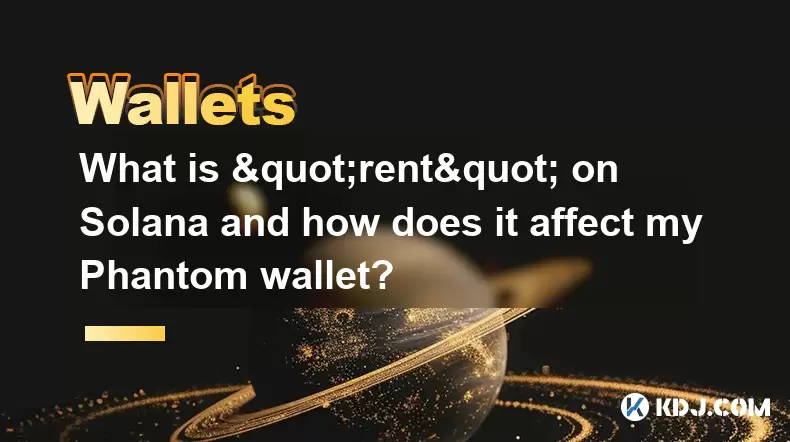
What is "rent" on Solana and how does it affect my Phantom wallet?
Jul 02,2025 at 08:35pm
Understanding 'Rent' on SolanaIn the context of Solana, the term 'rent' refers to a storage fee that users pay for maintaining data on the blockchain. Unlike Ethereum, where storage costs are paid once via gas fees during contract deployment, Solana implements a recurring cost model to ensure efficient usage of network resources. This means that any acc...
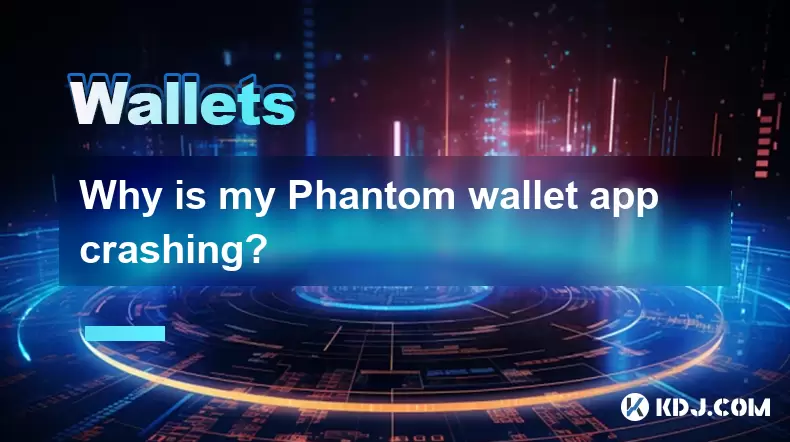
Why is my Phantom wallet app crashing?
Jul 02,2025 at 07:35pm
Understanding Phantom Wallet App CrashesIf you're experiencing issues with the Phantom wallet app crashing, you're not alone. Many users have reported similar problems, especially during high network activity or after recent updates. Phantom is a popular Solana-based wallet that allows users to store, send, and receive SOL tokens as well as interact wit...
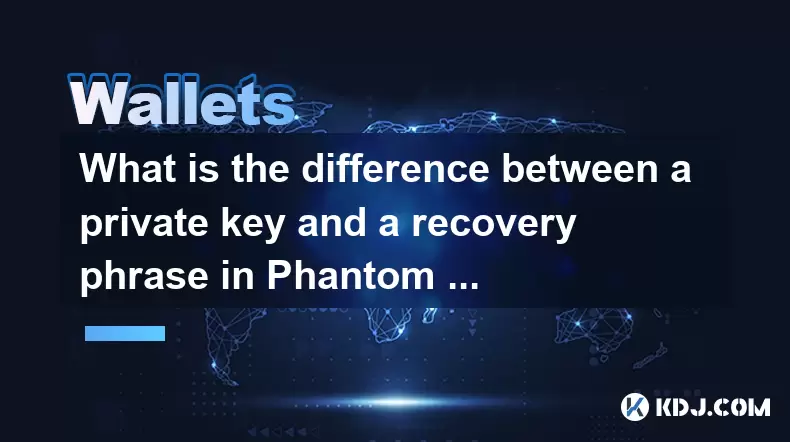
What is the difference between a private key and a recovery phrase in Phantom wallet?
Jul 02,2025 at 09:57am
Understanding the Basics of Phantom WalletPhantom wallet is a non-custodial digital wallet primarily used for interacting with the Solana blockchain. It allows users to store, send, and receive SOL tokens and other digital assets like NFTs. Non-custodial means that the user retains full control over their private keys and recovery phrases. Understanding...
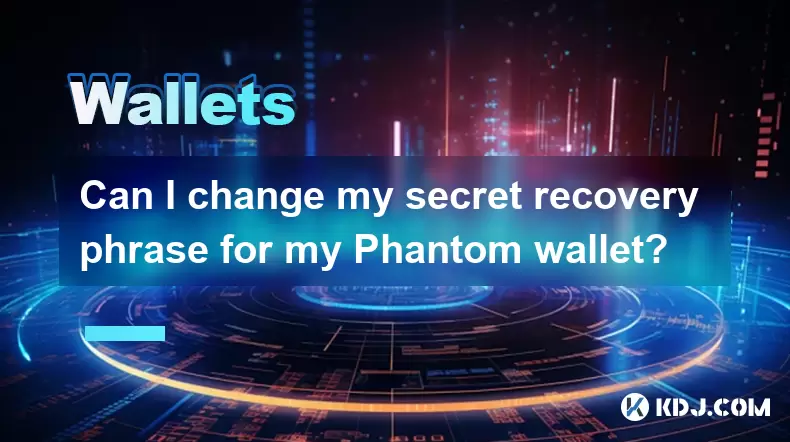
Can I change my secret recovery phrase for my Phantom wallet?
Jul 02,2025 at 12:07pm
Understanding the Role of a Secret Recovery PhraseThe secret recovery phrase, often referred to as a seed phrase, is a critical component in managing cryptocurrency wallets like Phantom. It serves as a backup mechanism that allows users to recover their wallet and associated assets if they lose access to their device or password. Typically, this phrase ...
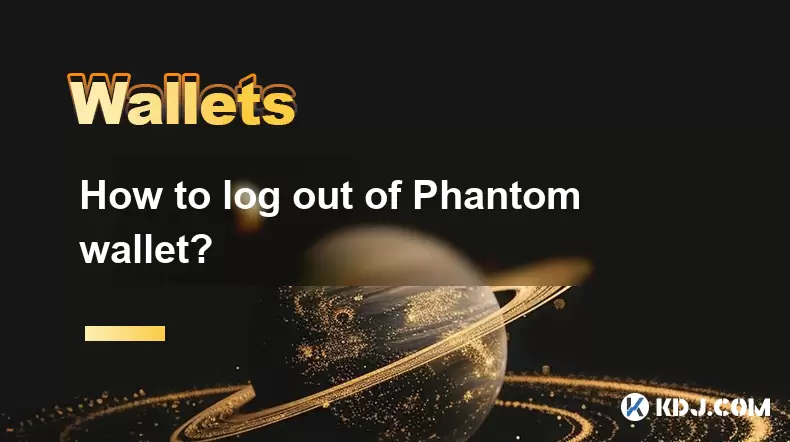
How to log out of Phantom wallet?
Jul 02,2025 at 05:28pm
What Is Phantom Wallet?Phantom wallet is a popular non-custodial cryptocurrency wallet designed primarily for the Solana blockchain, offering users the ability to store, send, and receive SOL and SPL tokens. It also supports integration with decentralized applications (dApps) and allows users to participate in staking, governance, and NFT trading. Being...
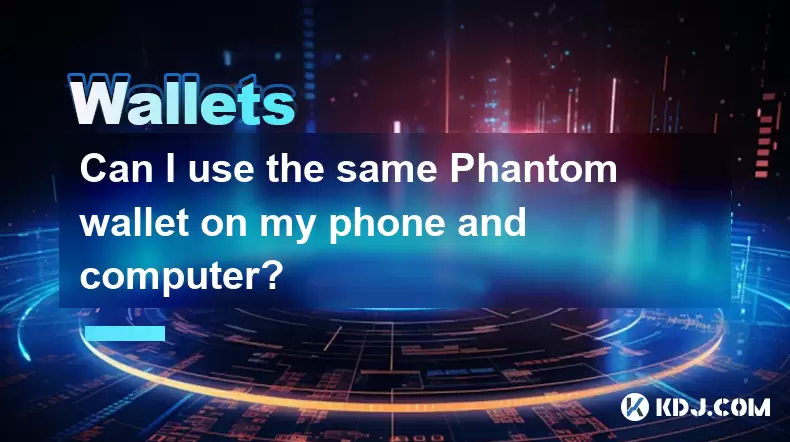
Can I use the same Phantom wallet on my phone and computer?
Jul 02,2025 at 10:04am
Phantom Wallet: Cross-Device CompatibilityPhantom wallet is a non-custodial cryptocurrency wallet designed primarily for interacting with the Solana blockchain. It supports both browser extensions and mobile applications, making it versatile for users who want to manage their digital assets across multiple devices. One of the most common questions among...

What is "rent" on Solana and how does it affect my Phantom wallet?
Jul 02,2025 at 08:35pm
Understanding 'Rent' on SolanaIn the context of Solana, the term 'rent' refers to a storage fee that users pay for maintaining data on the blockchain. Unlike Ethereum, where storage costs are paid once via gas fees during contract deployment, Solana implements a recurring cost model to ensure efficient usage of network resources. This means that any acc...

Why is my Phantom wallet app crashing?
Jul 02,2025 at 07:35pm
Understanding Phantom Wallet App CrashesIf you're experiencing issues with the Phantom wallet app crashing, you're not alone. Many users have reported similar problems, especially during high network activity or after recent updates. Phantom is a popular Solana-based wallet that allows users to store, send, and receive SOL tokens as well as interact wit...

What is the difference between a private key and a recovery phrase in Phantom wallet?
Jul 02,2025 at 09:57am
Understanding the Basics of Phantom WalletPhantom wallet is a non-custodial digital wallet primarily used for interacting with the Solana blockchain. It allows users to store, send, and receive SOL tokens and other digital assets like NFTs. Non-custodial means that the user retains full control over their private keys and recovery phrases. Understanding...

Can I change my secret recovery phrase for my Phantom wallet?
Jul 02,2025 at 12:07pm
Understanding the Role of a Secret Recovery PhraseThe secret recovery phrase, often referred to as a seed phrase, is a critical component in managing cryptocurrency wallets like Phantom. It serves as a backup mechanism that allows users to recover their wallet and associated assets if they lose access to their device or password. Typically, this phrase ...

How to log out of Phantom wallet?
Jul 02,2025 at 05:28pm
What Is Phantom Wallet?Phantom wallet is a popular non-custodial cryptocurrency wallet designed primarily for the Solana blockchain, offering users the ability to store, send, and receive SOL and SPL tokens. It also supports integration with decentralized applications (dApps) and allows users to participate in staking, governance, and NFT trading. Being...

Can I use the same Phantom wallet on my phone and computer?
Jul 02,2025 at 10:04am
Phantom Wallet: Cross-Device CompatibilityPhantom wallet is a non-custodial cryptocurrency wallet designed primarily for interacting with the Solana blockchain. It supports both browser extensions and mobile applications, making it versatile for users who want to manage their digital assets across multiple devices. One of the most common questions among...
See all articles























